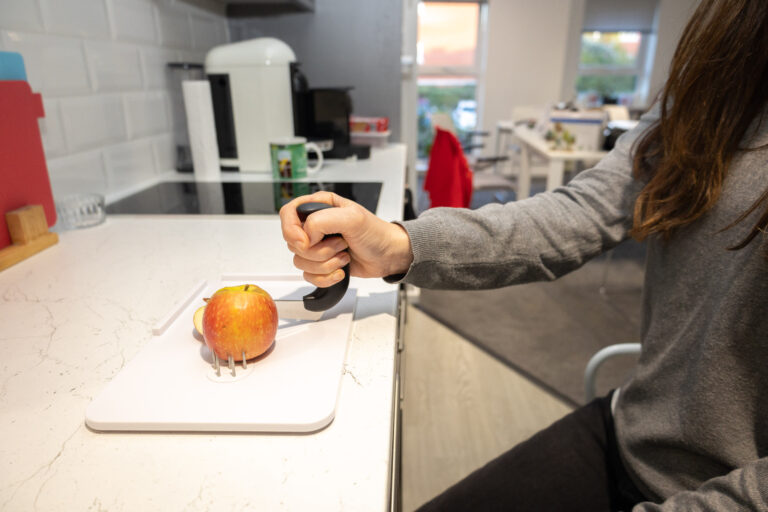
- Supported Housing
-
-

-
Know someone who would benefit from living with us?
-
- Community Support
-
-

-
Know someone who would benefit from our Independent Living Advisory Service?
-
- Get Involved
- About us
- Donate

We all deserve to enjoy safe, satisfying meals in our own homes. But for many disabled and older people, getting food on the table isn’t always straightforward. Everyday tasks like shopping, cooking, or even eating can become stressful and isolating without the right support.
A recent knowledge exchange project, Food at Home, led by the University of Sheffield, explores the realities behind closed doors – and what can be done to make food access fairer, safer and more inclusive.
Barriers in the kitchen
Many standard kitchens just don’t work for people with limited mobility or energy. High cupboards, heavy appliances and cramped layouts can turn simple tasks into daily hazards. Cooking from scratch might feel out of reach, especially for those living with pain, fatigue or reduced dexterity.
Some people rely more on ready meals or snacks to get by, but this isn’t always a choice – it’s a response to an environment that hasn’t been built with them in mind.
Getting the groceries
Shopping can be another major hurdle. Not everyone can get to the supermarket easily, and for those who try to shop online, the tech can be inaccessible or confusing. Limited delivery slots, complicated websites, and a lack of alternative ways to order all add to the frustration.
According to Age UK, 43% of people aged over 75 don’t use the internet regularly. One in five disabled adults either can’t get online or find it difficult to use. This puts them at a serious disadvantage when food shopping moves online by default.
The loneliness of eating alone
Food isn’t just fuel. It’s also about connection, routine, and the comfort of shared moments. Many disabled and older people eat alone most days, and this isolation takes a toll.
When people feel low or disconnected, they’re less likely to eat well – or eat at all. For those who once cooked for a partner, children or friends, the shift to solitary meals can feel like a loss of identity.
What needs to change?
The Food at Home report highlights several ways we can make food more accessible:
This is about more than food
Accessing food at home isn’t just a practical issue – it’s about dignity, independence and health. No one should have to struggle just to eat a decent meal in their own kitchen.
As our population ages and more people live with disability, the way we think about food access needs to change. With the right design, services and social connections in place, everyone can have a better food experience at home.
Sources:
Barrett et al. (2024), University of Sheffield, Age UK (2022), Campaign to End Loneliness (2023),
Centre for Ageing Better (2023), NHS Digital (2023), ONS (2023), Sustain (2021)